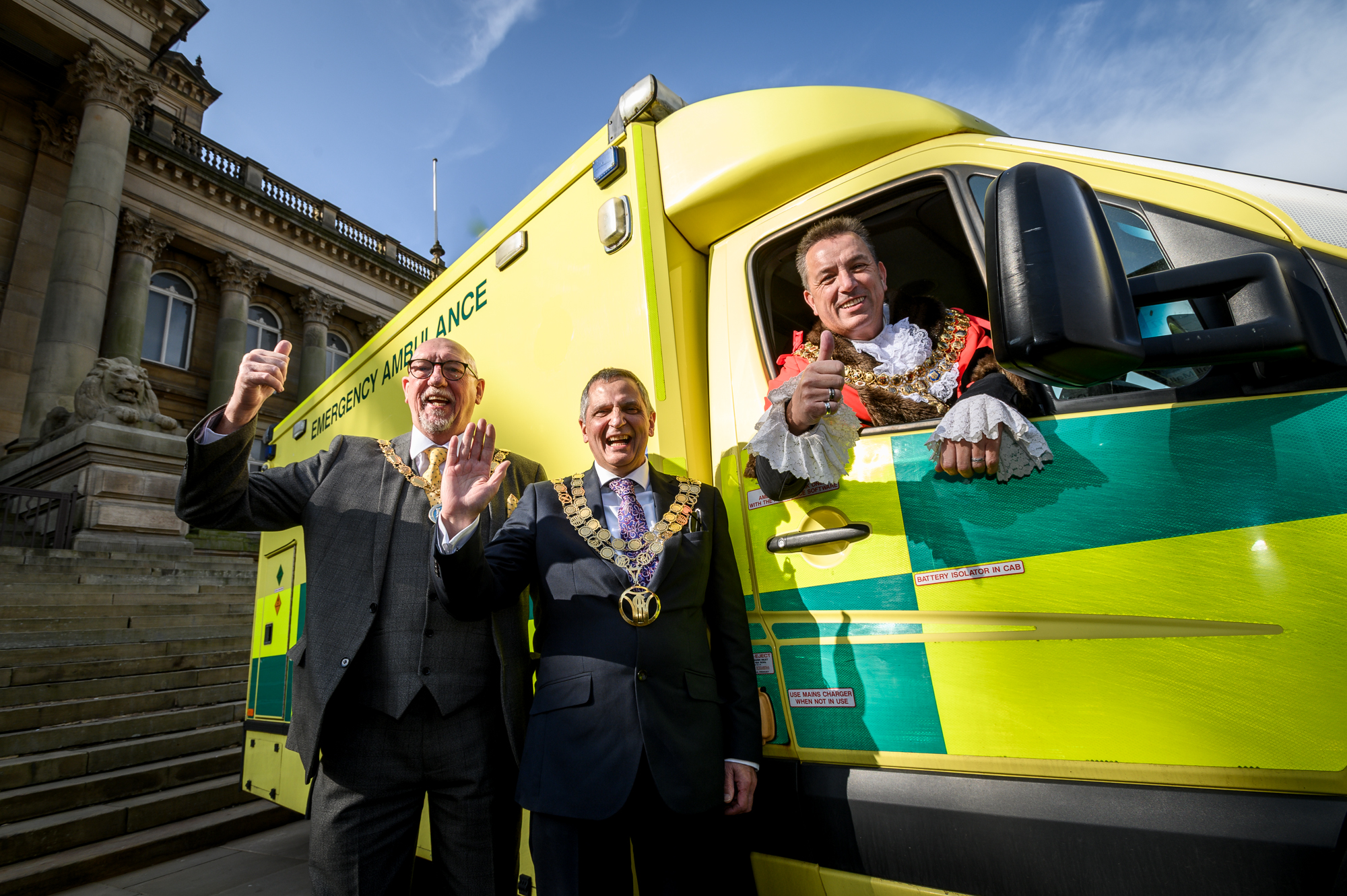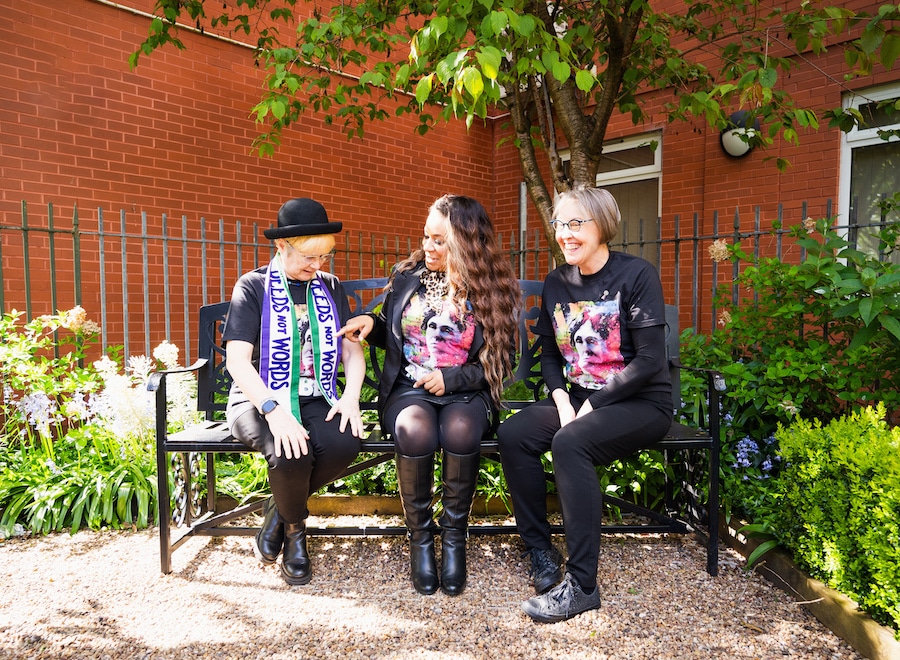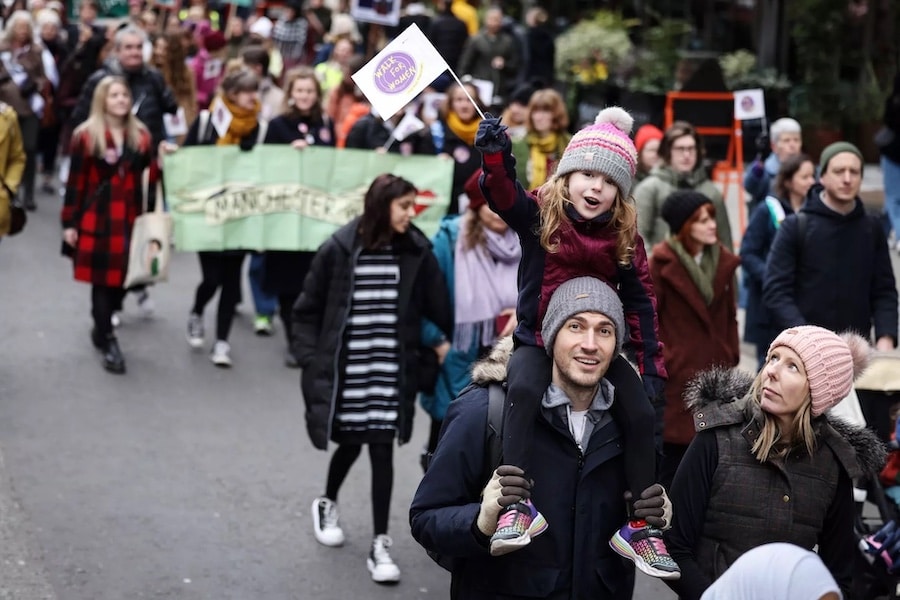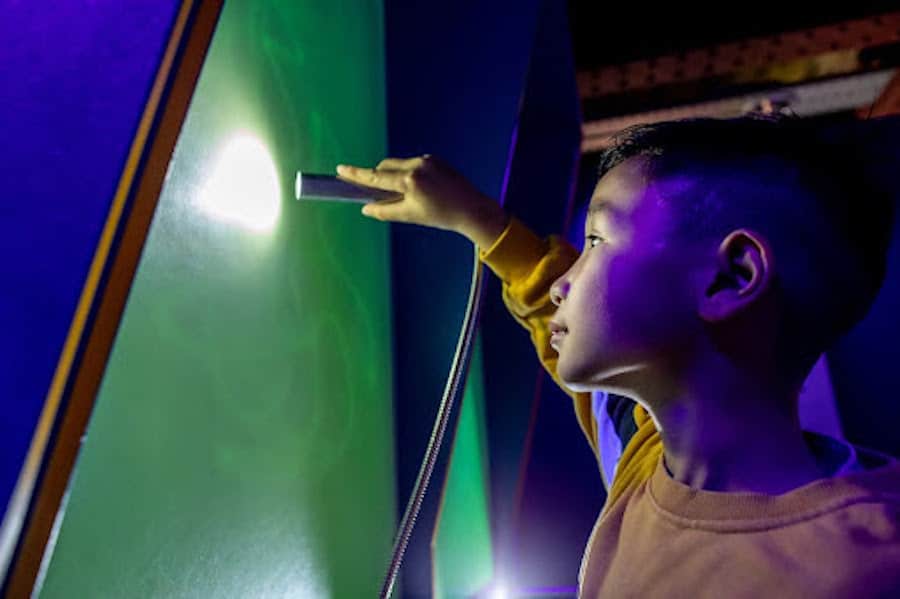People’s History Museum open new exhibition ‘Nothing About Us Without Us’ chronicling disability activism
- Written by Thom Bamford
- Last updated 2 years ago
- Community, Exhibitions, People
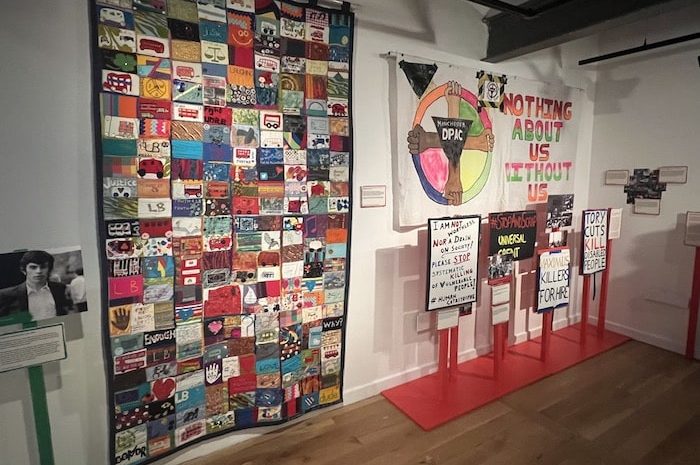
It includes protest material and objects, banners and t-shirts that have been collected from disabled activists and disabled led campaign groups over the years.
Community curators Anis Akhtar, Hannah Ross, Ruth Malkin and Alison Wilde helped to bring their own experiences, connections and extensive research to the project.
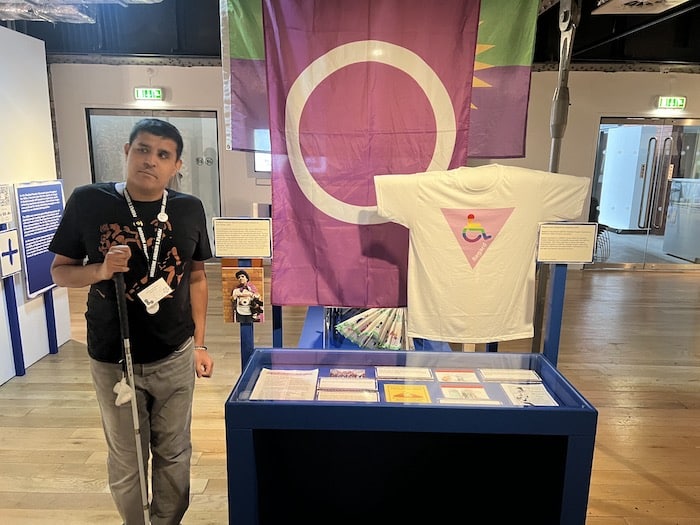
Speaking to I LOVE MCR, Anis said: “This is about our history and one that hasn’t been told in this focussed way before. Many younger people won’t be aware of some of the marches and campaigns that have taken place.
“I want people to come and celebrate, and to build a picture of the history of Disabled People’s Movement and to go away with an understanding of disability activism past, present and future.
“Some of the past issues are still happening today, but unless you understand the history – progress will never be achieved.”
The exhibition features Anis’ flag, which was designed after they felt unincluded by the intersex community.
Today’s opening co-incides with the first day of UK Disability History Month (16 Nov – 16 Dec).
The exhibition chronicles the start of the journey, as far back as 1620, where patients of Bedlam Hospital presented a petition to the House of Lords pushing for better conditions.
Years later, the first official organisation of disabled people, British Deaf and Dumb Association, was founded in 1980.
At the exhibition you realise how deep rooted in historical culture some of the depictions of disabled people are, for example, the character of Tiny Tim in Charles Dicken’s A Christmas Carol (1843).
The 19th Century saw a change in culture – where there was concern for disabled people – and charitable organisations were established to address their needs, but this often reinforced negative stereotypes that disabled people were objects of pity.
A century later, activists were turning the tables on a ‘Telethon’ television charity fundraiser, to which the movement responded with the protest slogan ‘Piss on Pity’.
Along with T shirts, there are pieces of art such as the ‘Help the Normals’ collection can (Dolly Sen, 2012) which subverts and challenges assumptions about who we should pity.
Contemporarily, the exhibit features disabled people’s efforts for representation in the media. This happened as recently as 2021 in the film MUSIC by SIA, when a non-disabled actor was cast in the part of a non-verbal autistic person and the outrage that followed.
And even when disabled people get representation in the media, such as Cerrie Burnell from CBeebies, the exhibition shows how the media sensationalised alleged complaints made to OFCOM about her ‘scaring children’ with her disability.

Ruth Malkin, one of the community curators for the exhibition said: “Nothing About Us Without Us has been one of the most life affirming, positive work experiences of my life (and I’m getting on a bit).
“It has been truly empowering to work with an incredible disabled people to tell the story of our community’s history.
“People coming to the exhibition will get a sense of the incredible disabled people past and present who have tirelessly campaigned and raised awareness to make life better for all disabled people both now and for the future.
“They will get a sense of just how far we have come as a society from the days when disabled people had no choice but to enter a workhouse and beg to stay alive.
“They will laugh at the satirical cartoons, cry at the appalling stories of disablist discrimination and share the triumph at the battles fought and won by disability rights campaigners dating back to the 19th Century.
“I’m hoping that they will leave informed about disabled and D/deaf people’s historical struggles, and empowered to join a cause that is continuing today.
“To remove the disabling barriers to everyone in the UK and beyond.”
The exhibition mixes activism with protest, banners, photographs, art, visual media and has video testimony from disabled people across the North West documenting their experiences and challenges faced everyday.
This is vital exhibition, one in which everyone should visit to understand the history of disabled peoples and how we can create an inclusive future without repeating the mistakes of the past.
The exhibition is available in Large Print Text, British Sign Language, braille and has audio transcriptions. There is also a quiet space at the museum for visitors to use when needed.
The People’s History Museum’s opening hours are 10.00am to 5.00pm every day except Tuesday.
Suggested donation £5.
To find out more, please visit their website by clicking here.
- This article was last updated 2 years ago.
- It was first published on 16 November 2022 and is subject to be updated from time to time. Please refresh or return to see the latest version.
Did we miss something? Let us know: [email protected]
Want to be the first to receive all the latest news stories, what’s on and events from the heart of Manchester? Sign up here.
Manchester is a successful city, but many people suffer. I Love Manchester helps raise awareness and funds to help improve the lives and prospects of people across Greater Manchester – and we can’t do it without your help. So please support us with what you can so we can continue to spread the love. Thank you in advance!
An email you’ll love. Subscribe to our newsletter to get the latest news stories delivered direct to your inbox.
Got a story worth sharing?
What’s the story? We are all ears when it comes to positive news and inspiring stories. You can send story ideas to [email protected]
While we can’t guarantee to publish everything, we will always consider any enquiry or idea that promotes:
- Independent new openings
- Human interest
- Not-for-profit organisations
- Community Interest Companies (CiCs) and projects
- Charities and charitable initiatives
- Affordability and offers saving people over 20%
For anything else, don’t hesitate to get in touch with us about advertorials (from £350+VAT) and advertising opportunities: [email protected]

Mayors and veterans unite to drive ambulances of hope to Ukraine
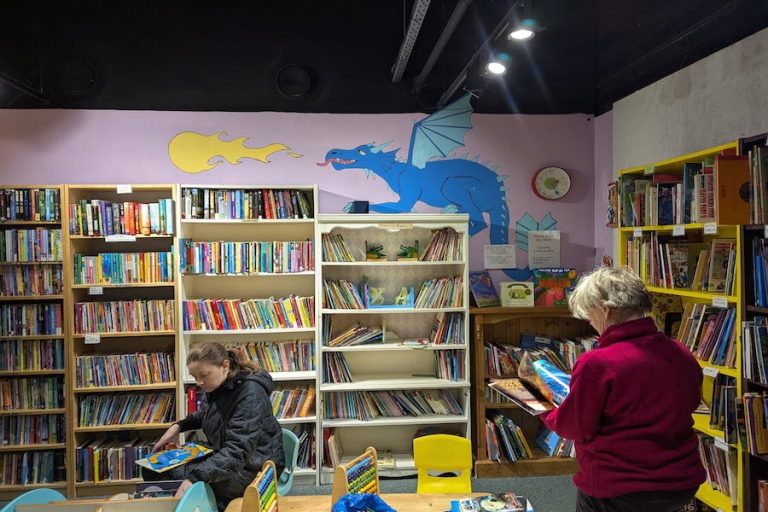
The bookshop where everything is free and everyone gets a warm welcome

How I AM has been changing lives for neurodivergent people for over 50 years

Review: RNCM Session Orchestra with Tim Burgess and Helen O’Hara is ‘a joyful evening of classics’









